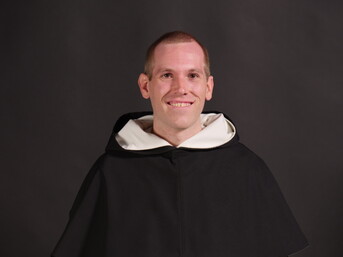Last year during my time studying at the Angelicum in Rome, I visited the tombs and relics of many, many saints. Sometimes I visited the relics of saints I knew well, such as when I made a pilgrimage to the tomb of St. Dominic in Bologna. Other times I happened upon the body of a saint that I had never heard of, visible in a glass coffin beneath an altar. I would look around for the name of the saint, usually posted somewhere nearby, and say a short prayer: "Dear Saint N., I don't know who you are, but please pray for me."
One saint I encountered who I hardly knew previously was St. Catherine of Bologna. I learned that she was a Poor Clare abbess in the 15th century and that her body is one of the few incorrupt bodies that does not have a wax mask over the face. Being incorrupt does not mean that the body never decays, but that it does so very, very slowly, much more slowly than expected naturally. Such bodies of saints are often given a wax mask to give an impression of what they looked like when first exhumed. But I wanted to see what an incorrupt relic really looks like after 500 years. After that much time, you would expect nothing but bones, but St. Catherine's body still has flesh and skin, blackened though they are by centuries of proximity to devotional candles.
Sometimes I feel awkward praying in front of relics. I look at the relics and speak to the saint, knowing that the saint is not there now. The saint is in heaven and can hear me from anywhere, and yet I feel some need to visit the matter they left behind, using this as an occasion to speak to him or her. Since I am still embodied, I need some physical direction to look, and somehow it helps to have a physical connection to the saint. This connection works both in the direction of the past and the future. First, the relics of a saint connect me to the earthly life of the saint. Second, I can reflect on how, at the end of time, this saint will rise again with his or her own same body, though changed and glorified.
Times like this are also an occasion for me to meditate on my own future. In two crypts I found the words, "What you are now, we once were. What we are now, you shall be." Someday, only God knows when, I too will leave behind this body of mine. Then sometime later, I will again take it up again. Am I living life now with this in mind? Am I striving to enter the narrow gate, to spend eternity united with God and with the saints? I need to keep asking myself these questions, so as to resist the temptation to settle for some temporary good of this life as if it were my ultimate goal.

Br. Paschal Strader, O.P. | Meet the Brothers in Formation HERE
